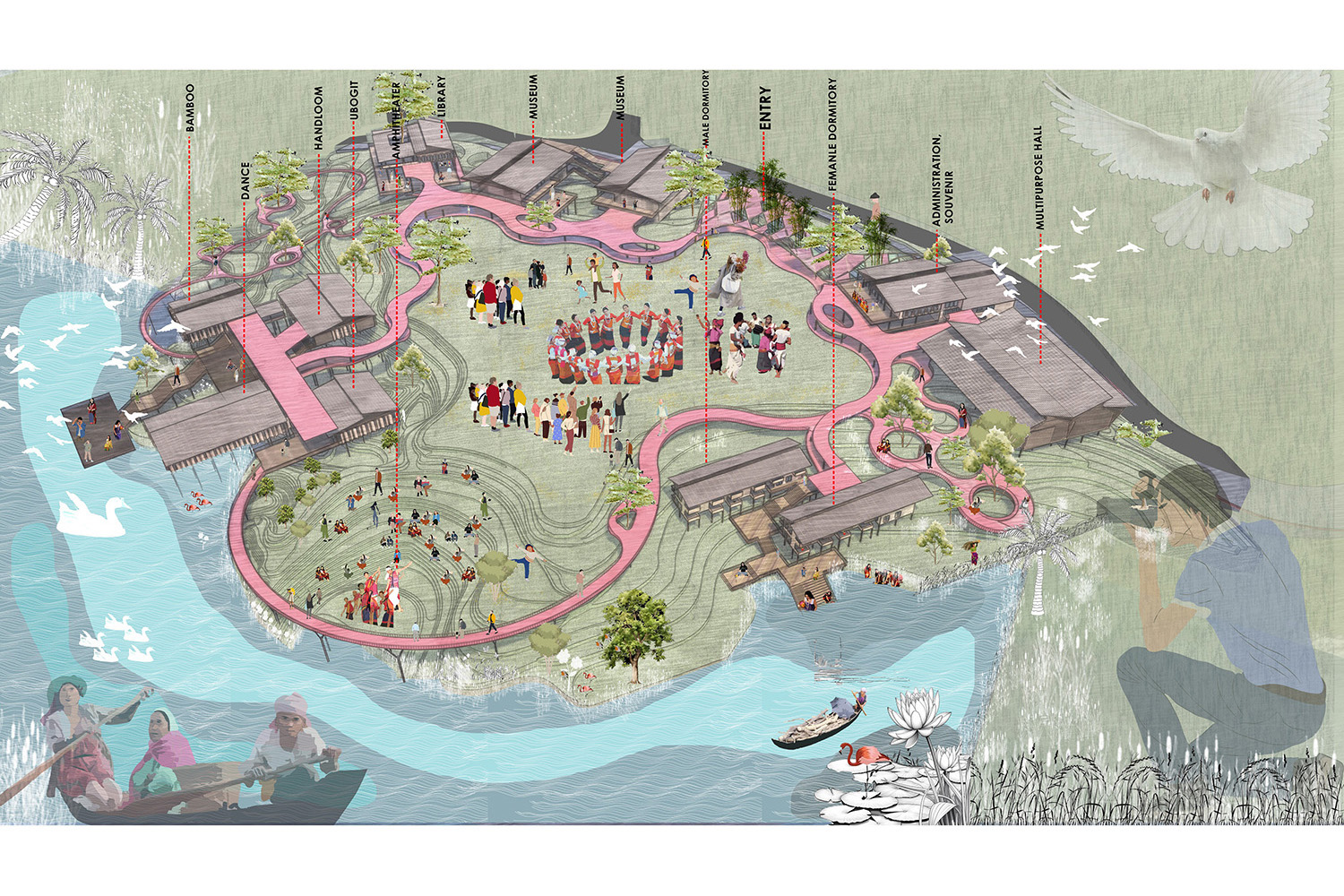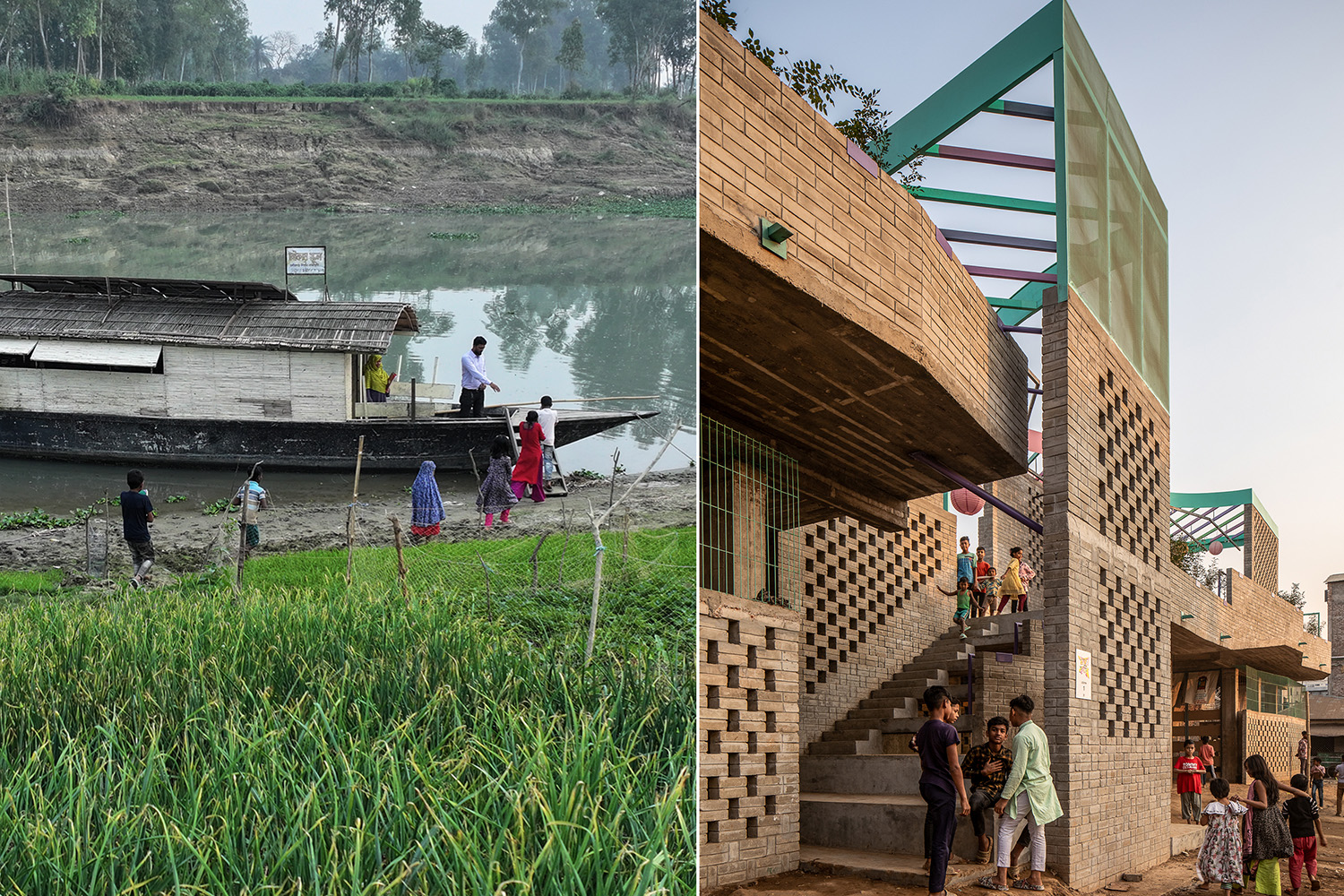Mahasthangarh Archaeology Museum: A Gateway to the Past
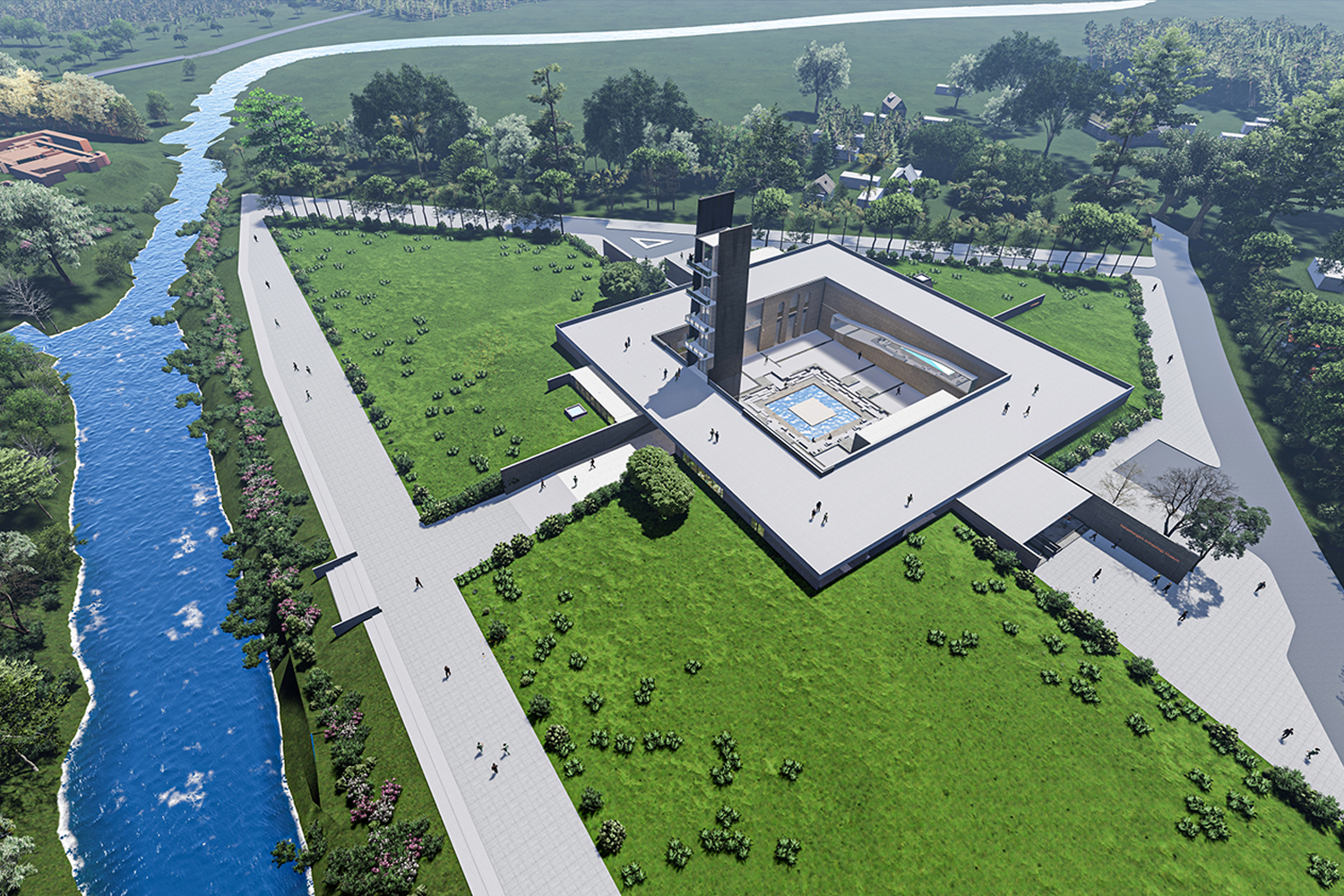
This project represents a thoughtful and timely endeavour to create a modern architectural space that honors the profound historical legacy of Mahasthangarh. The design’s aspiration to blend traditional regional architecture with contemporary ideas, a common approach to museum design, provides a clear conceptual framework. By organizing exhibition spaces according to distinct archaeological periods, the student has crafted a straightforward narrative for visitors, allowing them to journey through history. The integration of social spaces, such as cafes and walking paths, demonstrates an awareness of the museum’s role as a community asset, not merely a repository of artifacts. However, the project appears to lack a deep-rootedness in the broader context of Mahasthan or Bengal, presenting a formal challenge that the design must more profoundly address to truly resonate with its cultural setting. Additionally, while the brief mentions distinct architectural styles and plans with cardinal directions and central courtyards, it presents a challenge by not fully articulating how these elements move beyond formal inspiration to capture the deep-rooted, broader contextual essence of the region. The document is strong on what the project will include, but less explicit on how these design decisions will be imbued with a profound sense of place that aligns with the context of Mahasthan or Bengal. ─ Editor
From the submission:
Bangladesh has a rich and diverse history dating back thousands of years. The region has been inhabited since prehistoric times, with evidence of ancient human settlements and vibrant civilizations. Archaeological sites across Bangladesh provide valuable insights into early urbanization, trade networks, cultural practices, and technological advancements. For example, Mahasthangarh, one of the country’s earliest urban archaeological sites, holds significant historical importance. It was a thriving city by the 3rd century BCE, and its remnants—including ancient fortifications, temples, stupas, and other structures—offer a window into the region’s early urban life.
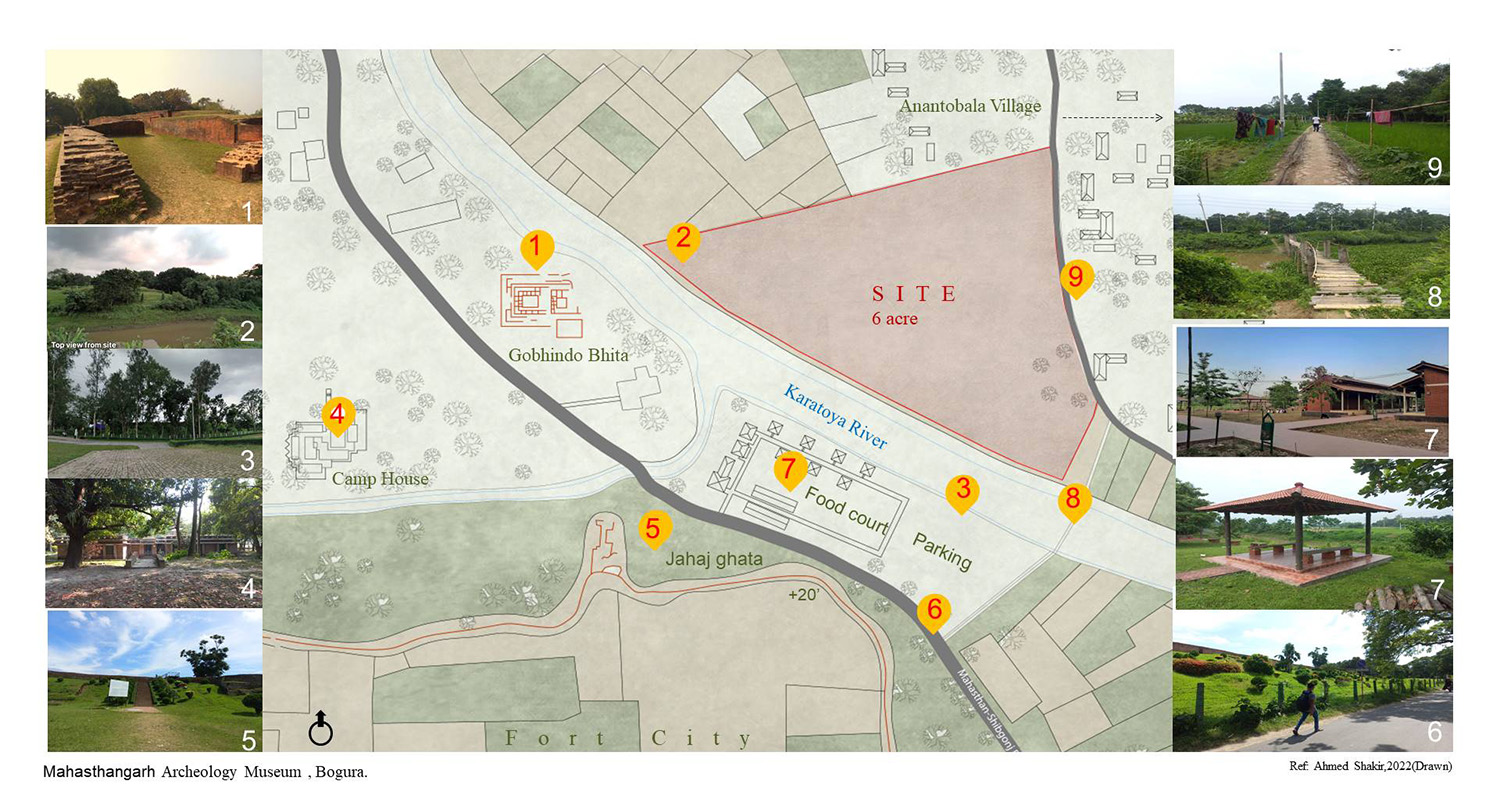

This studio project aims to design an archaeology museum for Mahasthangarh that effectively documents the site’s rich history. The museum will display regional artifacts and relics, providing an immersive and educational experience. By achieving a harmony between old and new, the design combines traditional architectural principles with modern technology and futuristic ideas. Additionally, it prioritizes the museum’s impact on the local community, integrating social spaces and facilities that benefit both visitors and residents.
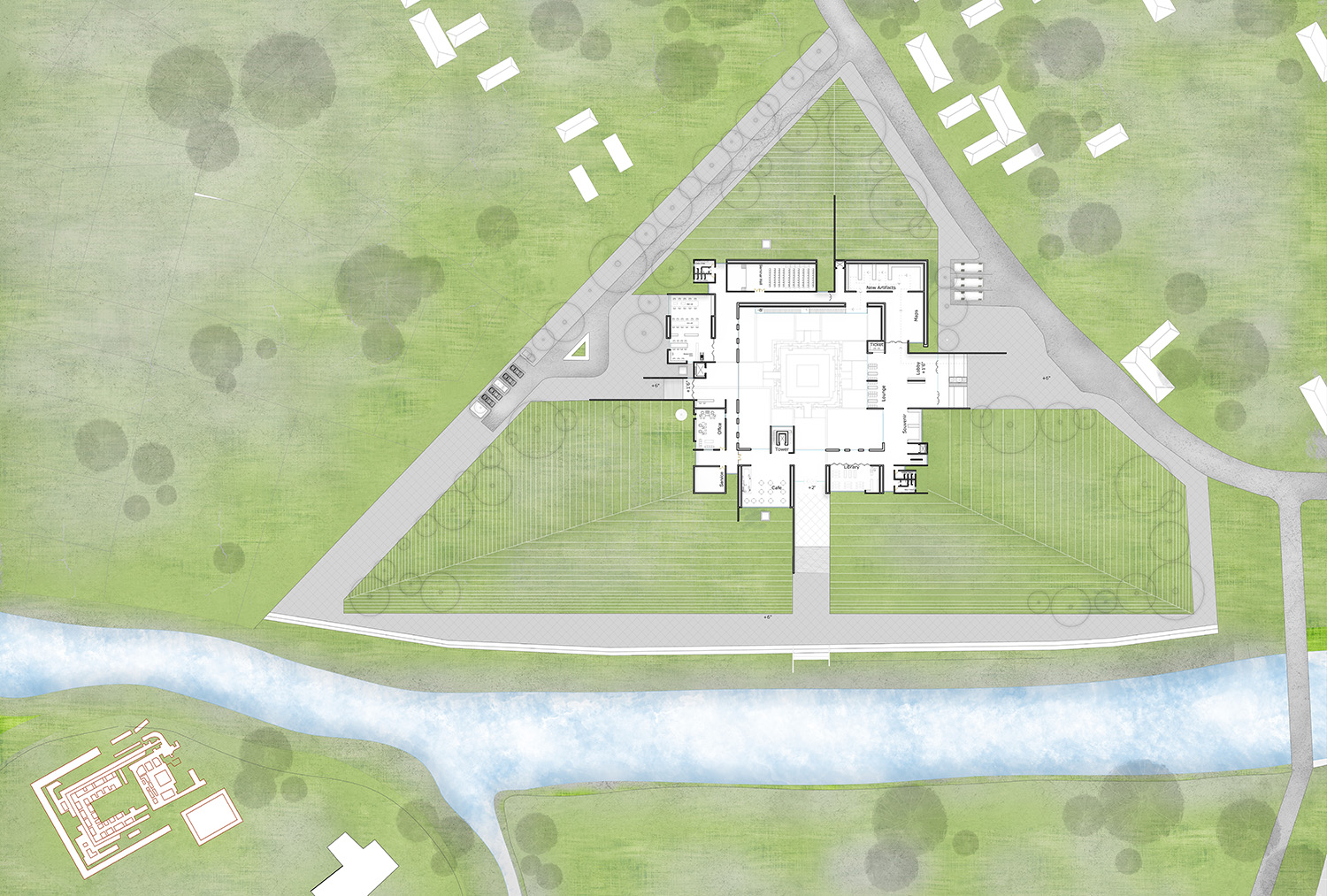
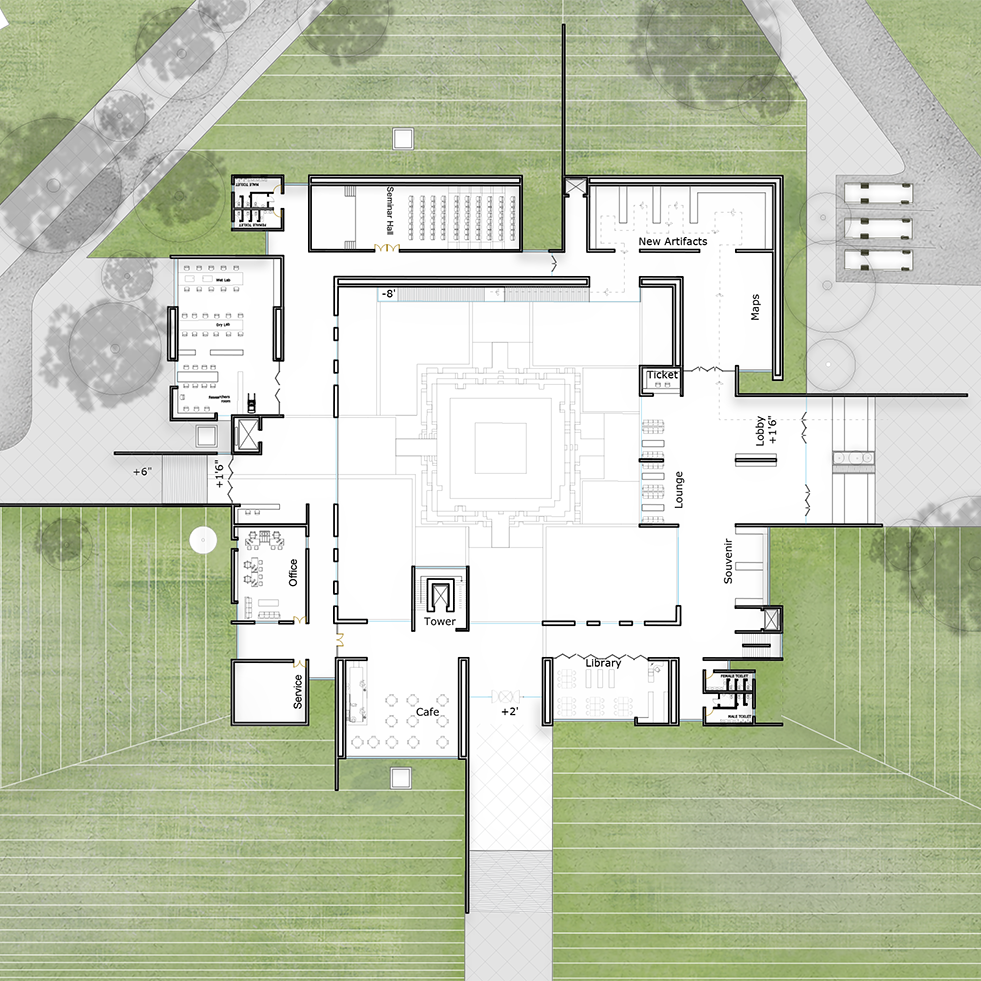
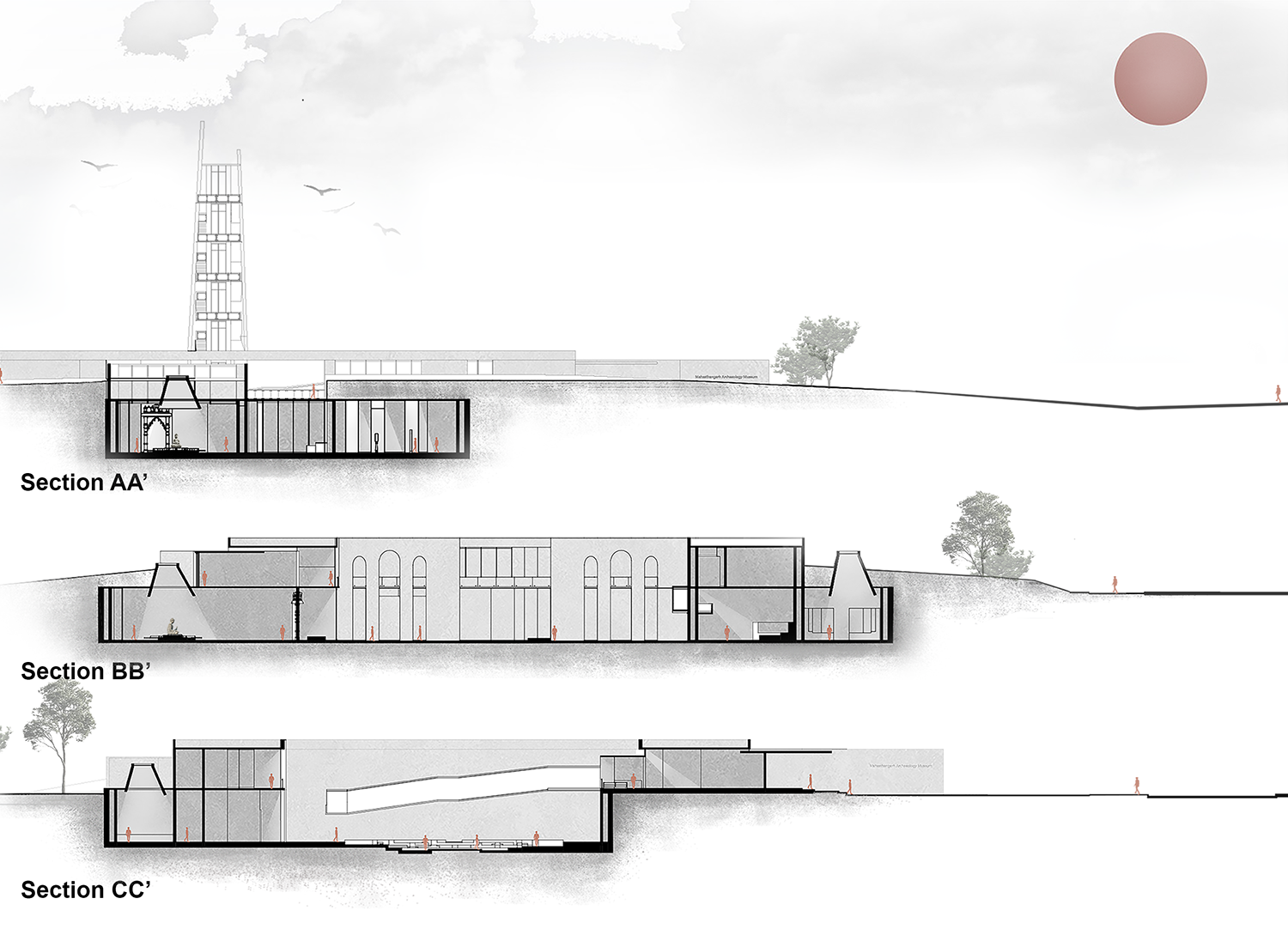
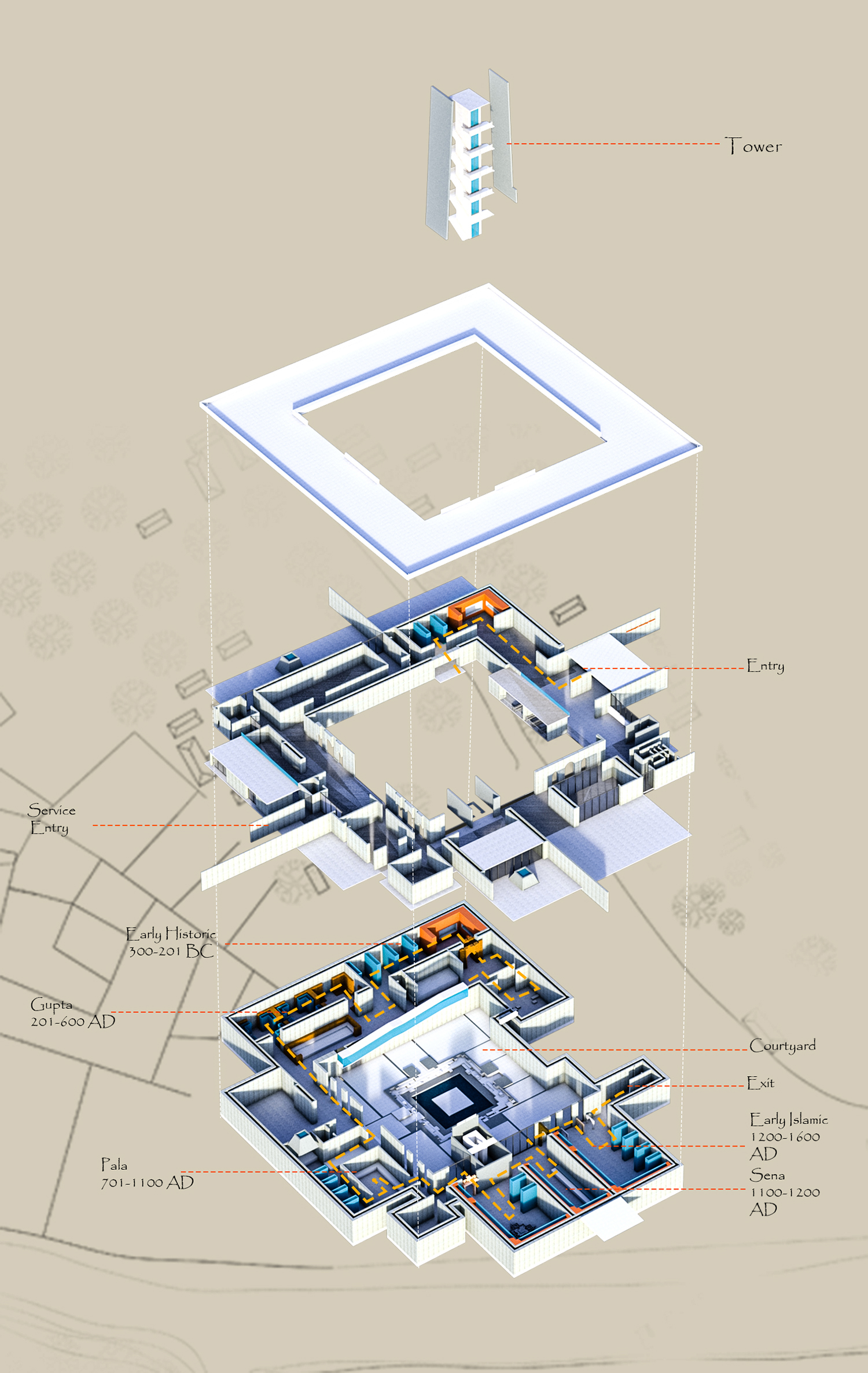
The distinctive architectural style of Mahasthangarh’s ancient structures has inspired the museum’s design. Key plans from the site, such as those of Porshuramer Bari, Gokul Medh, Vasu Bihar, and Bihar Dhap, are organized along two axes on the four cardinal directions. Following the example of the Bihara and Porshuramer palace, which feature a central courtyard, the museum design incorporates a large courtyard to serve as an outdoor exhibition area, as requested by the current museum authorities. A watchtower is included to provide aerial views of the surrounding archaeological sites, helping visitors understand the museum’s context. Facilities like a library, café, souvenir shop, and walking paths are designed to increase public engagement with the museum and the history of Mahasthangarh.

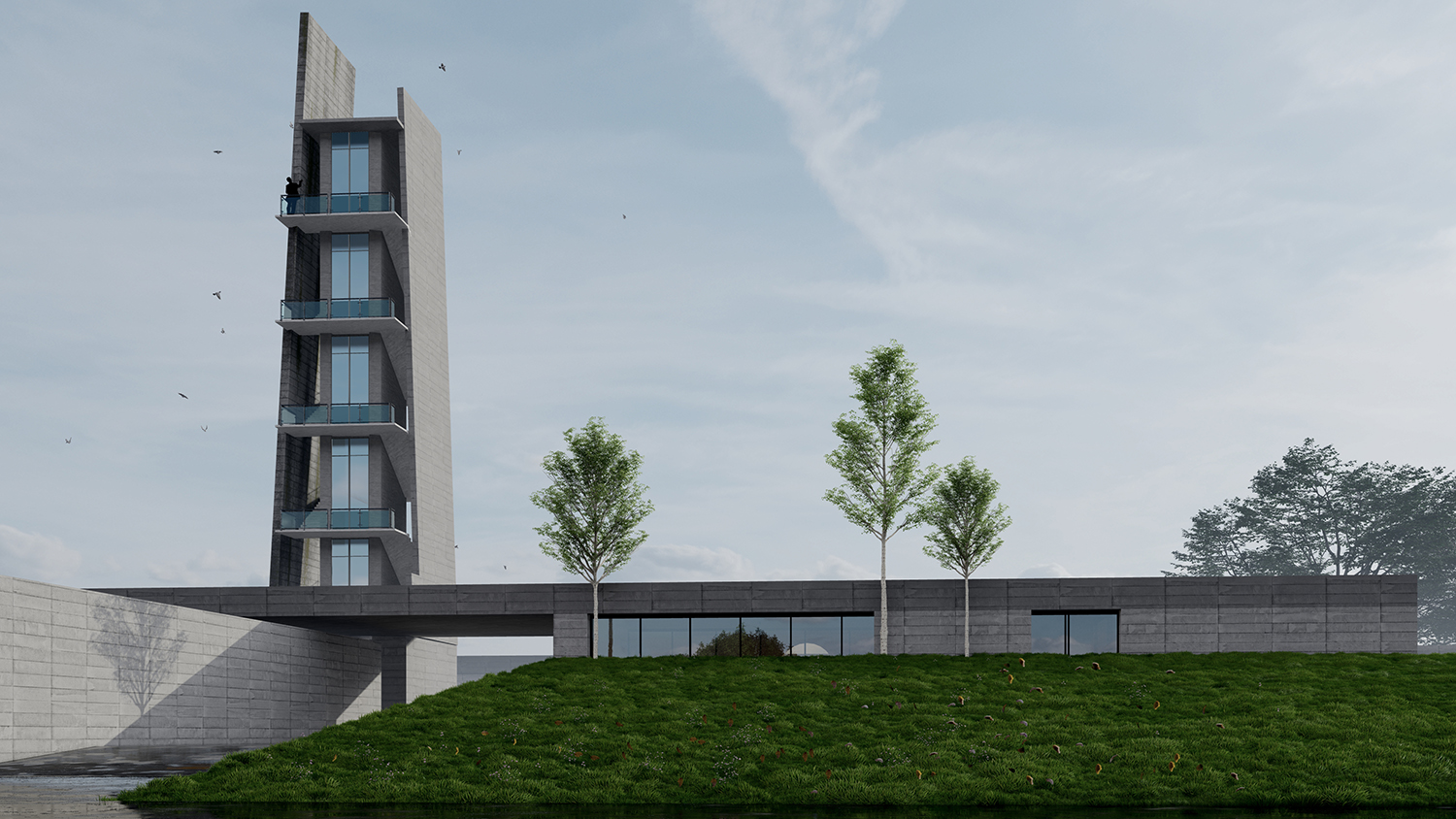
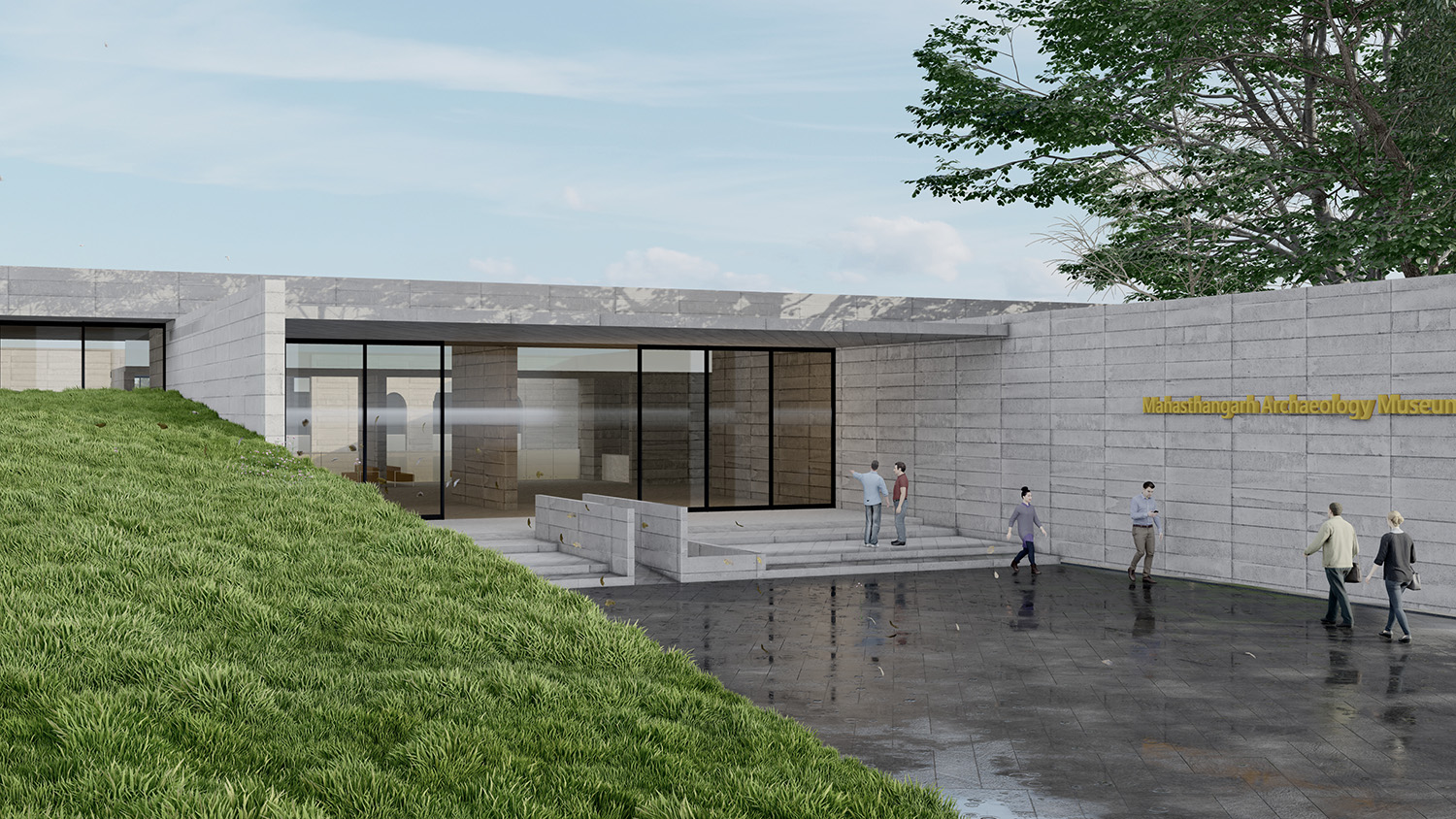
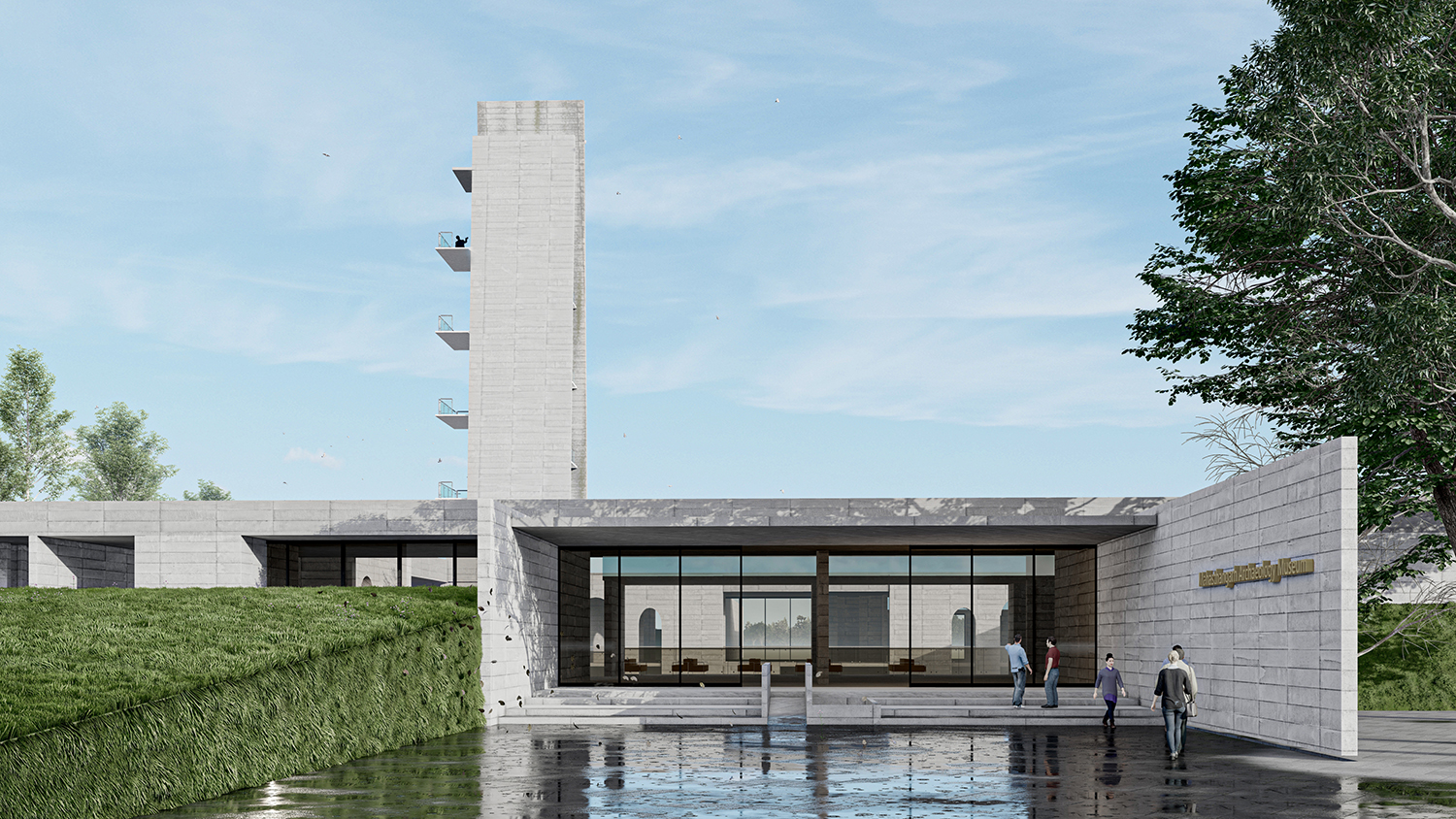
The exhibition spaces are organized according to the different archaeological periods found in the region. Each period is designed to be visually distinct, reflecting its unique design philosophy and aesthetics. This is achieved through the use of era-specific colors, materials, lighting, and spatial arrangements to evoke the essence of each time period, allowing visitors to journey through history.
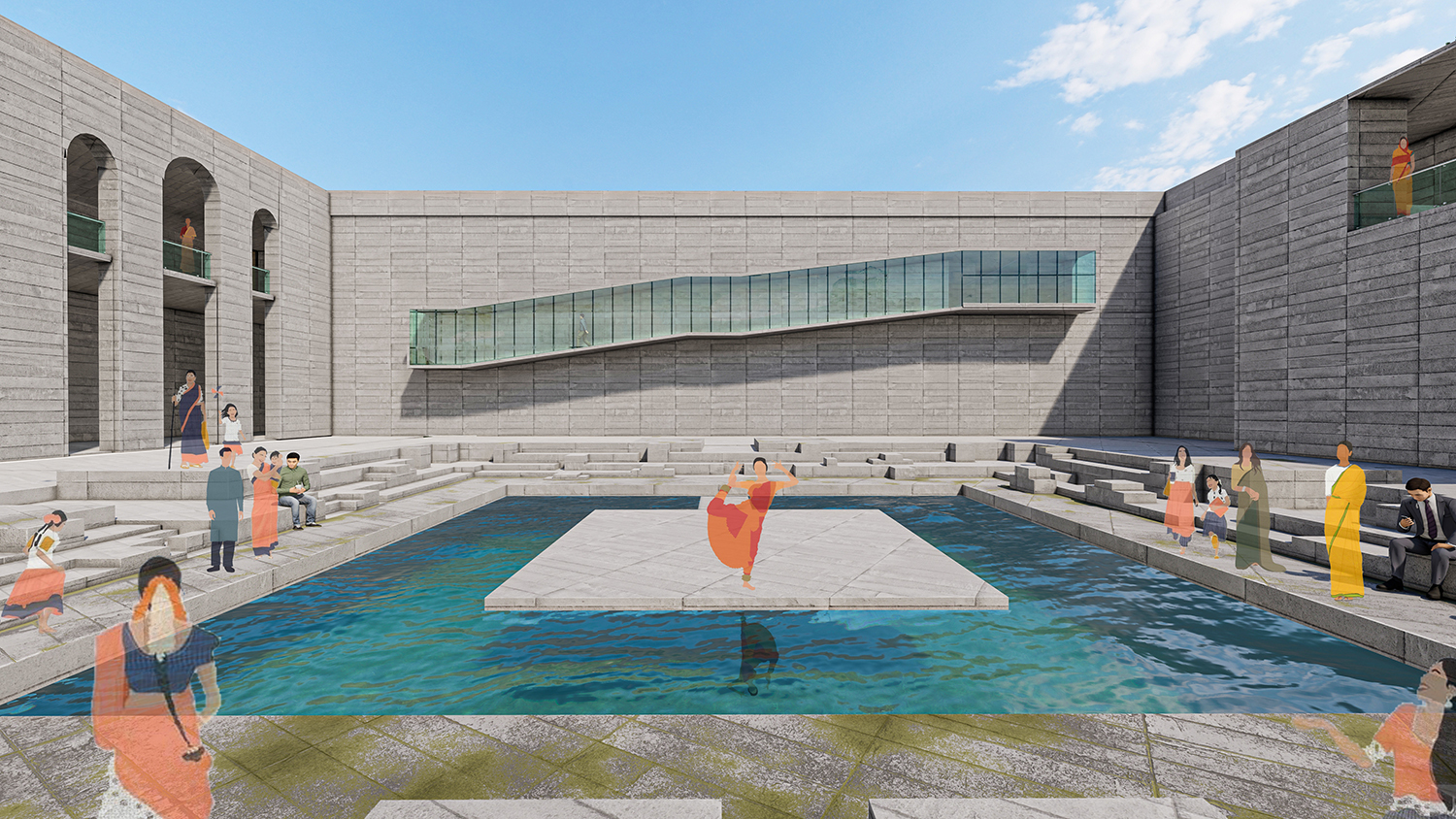

In summary, this museum is designed to be a gateway to the past, preserving Mahasthangarh’s legacy and offering visitors a deeper appreciation of the ancient cultures that flourished in the region.
Contributing Editor: Mohammad Habib Reza is an architectural and urban design theorist, historian and heritage expert, and an Associate Professor at the School of Architecture and Design, BRAC University, Dhaka.
